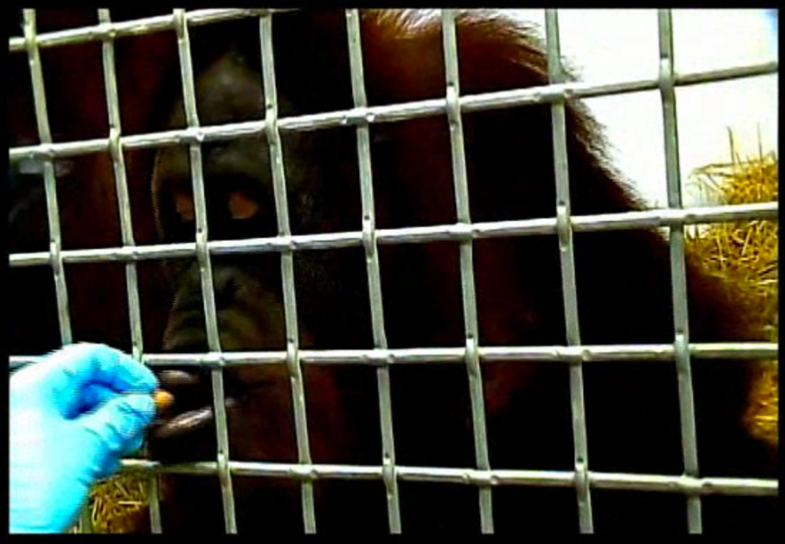Watch This Orangutan Make Sounds That Resemble Human Speech
“Rocky” offers the first evidence that great apes can control their voices to learn new sounds


Rocky the orangutan’s utterances may sound like the surly grunts of a teenager who’d rather be left alone, but they hold some clues about how human speech evolved. Today, scientists reported that Rocky can mimic human vocalizations, providing the first evidence that great apes can control their voices similarly to people.
For spoken language to evolve, we had to achieve mastery over our vocal cords. But since this skill hadn’t been seen in any other primates, researchers thought it might not have evolved until after we split from the great apes.
Rocky’s performance on an imitation game suggests otherwise. Scientists engaged him in a few rounds of “do-as-I-do” at his home, the Indianapolis Zoo. To earn his snacks, Rocky had to copy sounds a person made. Rocky was able move his vocalizations up and down in pitch and tone to match the experimenter, and make calls that resembled both consonants and vowels.
The scientists checked Rocky’s exclamations against a database of more than 12,000 hours of wild and captive orangutan calls, and found that these sounds fell outside the repertoire of normal orangutan vocalizations.
“A non-human great ape can achieve levels of volitional voice control qualitatively comparable to those manifested in humans,” concluded the team, who published the findings today in Scientific Reports.
This means that great apes aren’t just making uncontrolled sounds driven by arousal, coauthor Adriano Lameria of the University of Durham, UK told New Scientist. “The voice control shown by humans could derive from an evolutionary ancestor with similar voice control capacities as those found in orangutans and in all great apes more generally.”
Rocky’s performance on the game indicates that great apes may be able to control their vocal cords in ways crucial for conversation—he was able to make new sounds, in the moment, in a turn-taking context. Scientists have traditionally assumed that our simian ancestors had cognitive skills that outstripped their vocal ones, but the new evidence from Rocky suggests that these skillsets may have been equally sophisticated.
The fine-tuned ability to articulate sounds that humans enjoy today developed recently in our history. But perhaps, the team speculates, great apes were learning new calls that resembled vowels and consonants as far back as 10 million years ago.
